Technologies
Google’s Pixel Fold Could Take Foldable Phones Mainstream
Commentary: Foldable phones are disappointing, but Google’s Pixel Fold could change that. Here’s how.
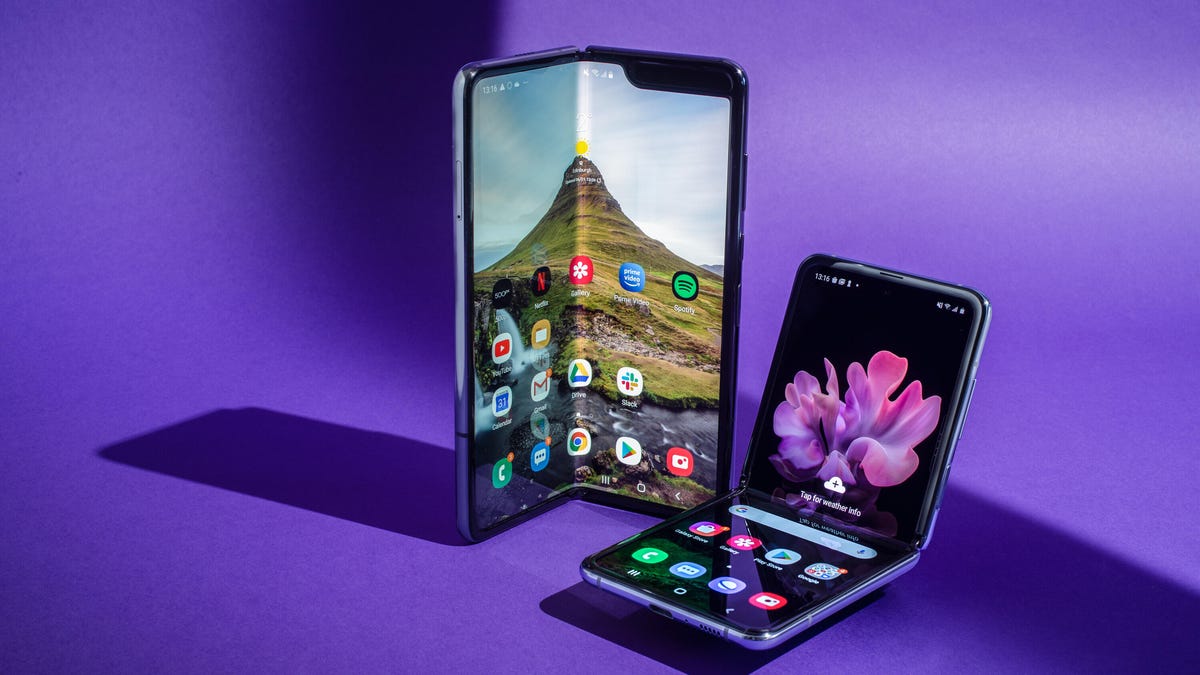
Back in 2021, I wrote that I was disappointed with foldable phones, which provided little to no revolution in how we use our phones on a daily basis, beyond the novelty of a screen that folds in half. Even today’s top models, like the Samsung Galaxy Z Fold 4, are perfectly fine, but once you get over the initial fun of the fold, they’re really just another Android phone. The problem is that with less common sizes and aspect ratios being used on today’s foldables, apps and games don’t natively run properly. The audience is small, and developers don’t have the motivation to put in the time, effort and cost to develop their apps for odd shapes and sizes.
But Google might change that soon enough, with a rumored foldable Pixel phone that could appear at Google I/O in May. The company is in a unique spot to address software concerns while creating compelling phone hardware that doesn’t break the bank.
To be clear, I do like foldable phones. I particularly like the larger «book fold» models, like the Galaxy Z Fold 4 and Honor Magic Vs, which transform from a regular-size phone into an almost tablet-size device, providing more screen space for videos, games and documents. I remember when I got the first-generation Galaxy Fold and felt genuinely excited at seeing the screen bend in the middle. And I remember the various strangers who’d stop and ask to see it when I used it in public — with one bartender so entranced with the demo I gave that he returned the favor with a free beer. Score.
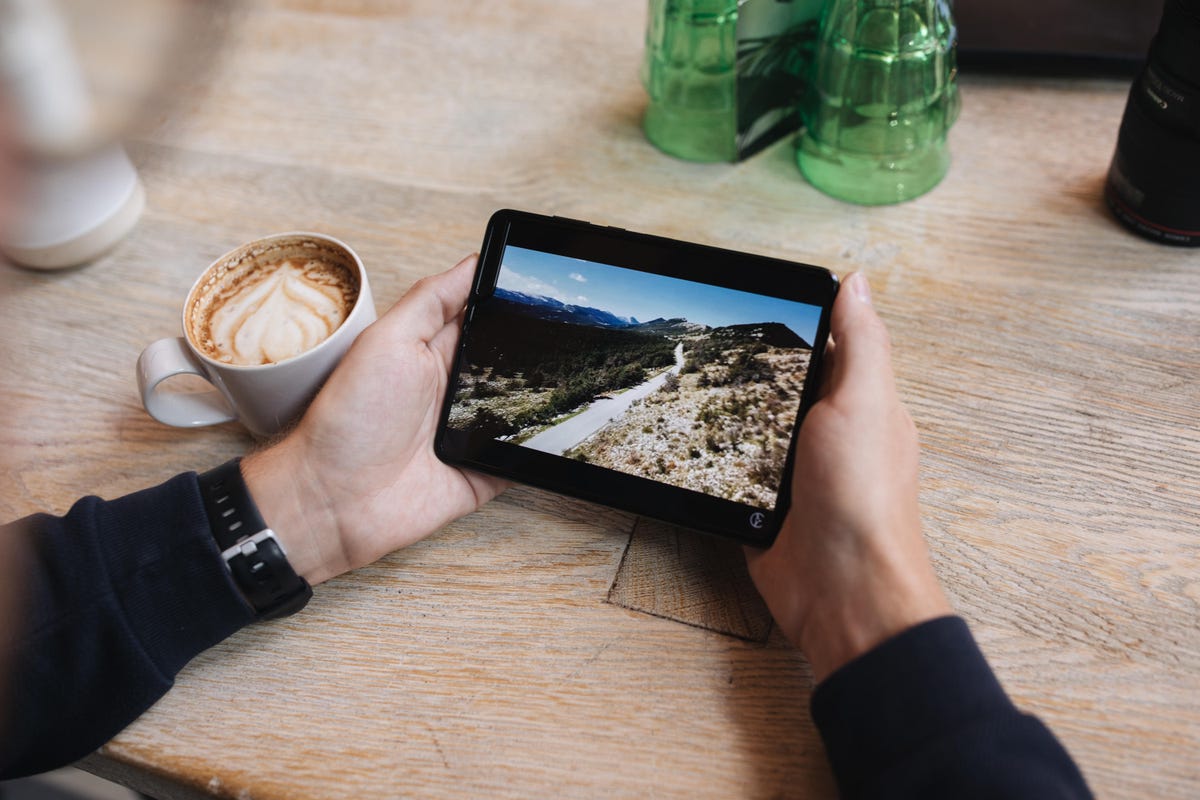

The bigger internal display of the Galaxy Z Fold series is great for watching videos.
Andrew Lanxon/CNETRead more: Best Foldable Phones to Buy in 2023
But the software is still where folding phones lag behind. Android is designed primarily for regular candybar smartphones, which are commonly around 6 inches to 6.8 inches in size and have standard aspect ratios like 16:9. In other words, phones like the Galaxy S23 Ultra or Pixel 7 Pro take full advantage of Android, and app developers design their apps for these same form factors. Why? Because they’re the most commonly used sizes, and therefore their apps will be optimized for the widest number of devices.
Android 12L and 13 address some of the sizing issues, but not all apps are optimized and either leave too much blank screen space or must stretch awkwardly to fit the screen. The Galaxy Z Fold 4, for example, has a tall and narrow 23.1:9 aspect ratio on the outside and a more square 21.6:18 aspect for the inner display — two nonstandard sizes that developers need to account for. And that’s just one device.
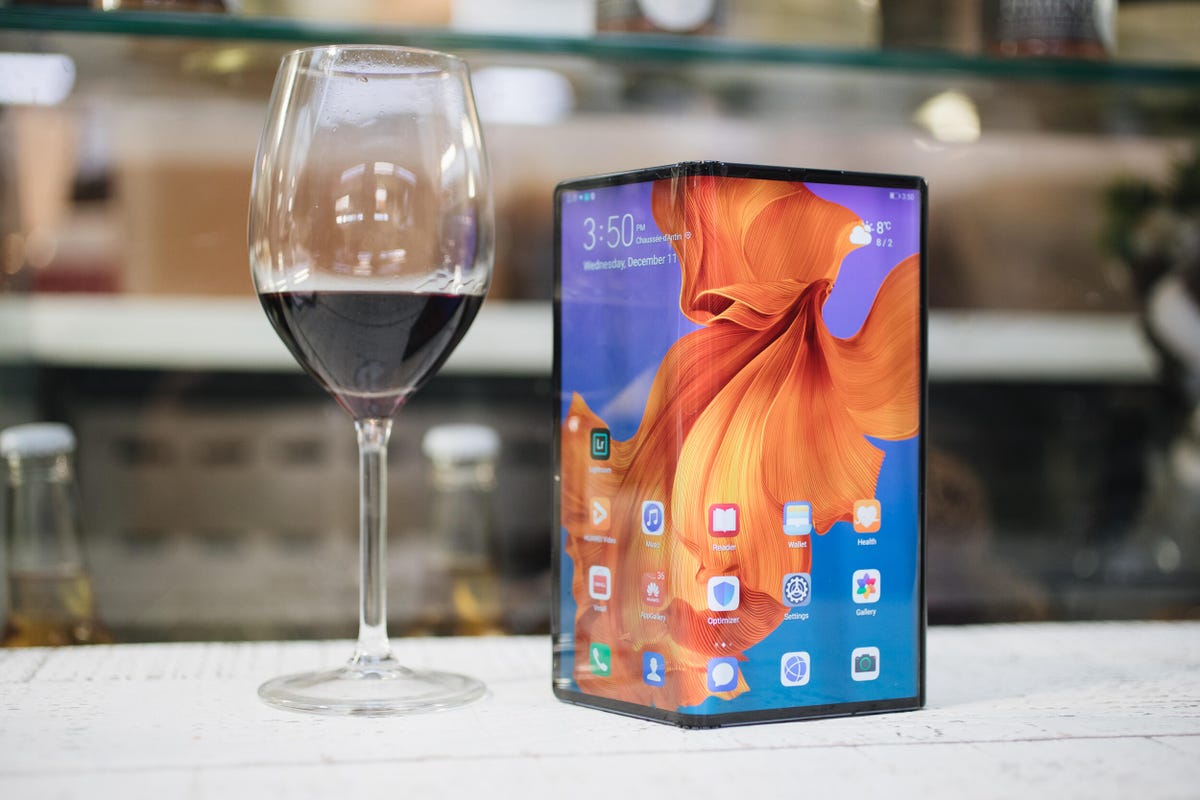

Huawei’s outward-folding Mate X was one of the earlier folding phones we saw.
Andrew Lanxon/CNETIt’s the same Android fragmentation issue that has plagued the platform since the beginning: Too many different devices means it’s difficult for developers to create for. Apple’s strategy of having fewer display sizes and almost identical aspect ratios has meant it’s typically been the easier platform for developers to work on. But Google has worked hard over the years to make Android an easier field on which to play, and it could do the same for foldables.
So could a folding Pixel phone be just another device for developers to struggle with? Perhaps not. If Google is committed to folding screen technology in its product lineup, then it’s safe to assume that we will see some key updates in Android that are specifically tailored to folding phones and different form factors. I’d like to see software that does a better job of automatically resizing apps, dual-screening when using a large display like the Z Fold 4’s or building more tricks into default apps that take advantage of inner and outer displays.
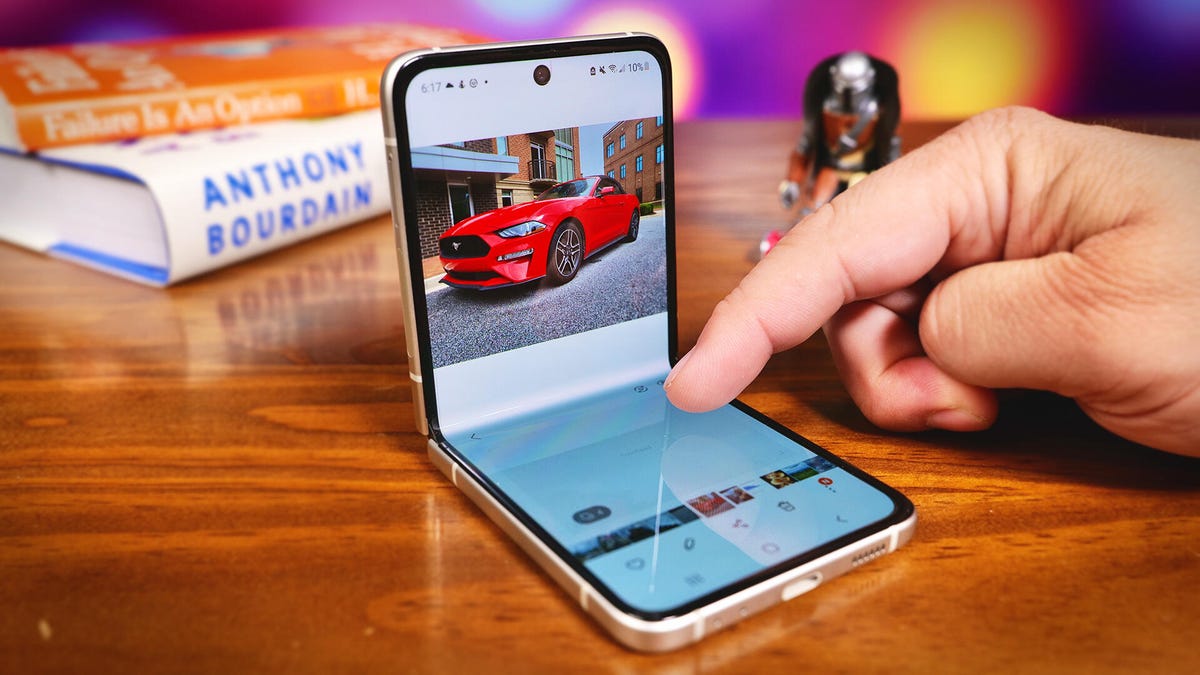

The tall and narrow dimensions of the Galaxy Z Flip present another dilemma for developers.
Patrick Holland/CNETMoreover, Google will likely work more closely with its key developer partners like Samsung, helping them not only optimize their existing apps for folding devices, but also create entirely new ones that can only be done with phones of this type. These partnerships will be crucial to helping Google create a compelling first-generation foldable, especially since non-folding Pixel phones account for just over 2% of smartphone market share in the US, according to analytics firm StatCounter. By comparison, Samsung has almost 30% share in the US.
Pixel phones tend to offer an excellent Android experience packaged in good hardware that costs hundreds less than flagship iPhone or Galaxy S phones. Google partnerships will be key to getting a Pixel foldable off the ground at an affordable price. A cheaper price is essential to getting a larger audience that would incentivize developers to create more fold-centric apps.
There are a lot of «ifs» and «coulds,» and we don’t know for sure if Google will launch a foldable. We also don’t know whether Google has a strategy in place to encourage adoption by working with software developers. Google will also have to rely on more than just its recognizable name to catapult the category into the big leagues. Let’s not forget that Microsoft’s Surface Duo 2 isn’t exactly ubiquitous, and neither is Samsung’s Galaxy Z Fold.
But I’m remaining hopeful, if only because I need to be. Standard smartphones have become increasingly dull and repetitive. For someone who writes about phones for a living, that’s a problem. Foldables present an opportunity to do things in a different and more exciting way, but it will be up to Google whether or not the category flourishes.
Technologies
We May Know What the Next Nintendo Switch 2 Pokemon Game Will Be Called
A massive leak reveals potential details about the 10th generation of Pokemon games coming to the Nintendo Switch 2, including big changes.

A new Pokemon game, Pokemon Legends: Z-A, will be released for the Nintendo Switch and Switch 2 on Thursday, but a recent leak might have revealed info about what’s coming next from the creators of the franchise. The names of the next games headed to the Switch 2, as well as some of the big changes to the Pokemon formula, may have been part of the leak.
The leak showed up on X Monday from the account Centro Leaks, as first spotted by Insider Gaming. Data about the upcoming games reportedly stems from a hack of the servers of the franchise developer Game Freak that happened in August 2024, referred to online as the Teraleak, that included the source code for the upcoming Pokemon Legenda: Z-A.
Among the information shared by the account was the possible name for what would be the 10th generation of Pokemon games that would come to the Switch 2 next year: Pokemon Wind and Pokemon Wave.
The Pokemon Company didn’t immediately respond to a request for confirmation about this leak.
Pokémon Gen 10:
Pokémon Wind and Pokémon Waves
Theme: Infinity
Directed by Shigeru Ohmori— Centro LEAKS (@CentroLeaks) October 13, 2025
According to the leak, Pokemon Wind/Wave is inspired by the Southeast Asia region and will feature a jungle-themed environment. It could also feature a new mechanic referred to as a Seed Pokemon, which is reportedly a special Pokemon that is heavily involved in the story and must be raised by the player. As it evolves, it will have a unique look that is procedurally generated, and once it’s fully evolved, it will allow the player to gain access to an island where they can find the main legendary Pokemon of the game.
The main theme of Pokemon Wind/Wave is the concept of infinity, according to the leak. This would match with the reported focus of procedurally generated content, not only with the special Seed Pokemon, but also with the islands of the game being procedurally generated, so each game is unique and could continue to grow with no end.
Also included in the leak were other details, including Pokemon on the overworld being interactable, weather affecting gameplay in some way, 18 new challenges for players instead of traditional gyms, and a few screenshots of the game in development that are still available to see at the PokeLeaks subreddit. There was also info that the 11th-generation Pokemon game could be released in 2030.
It is unlikely that Nintendo, The Pokemon Company or Game Freak will confirm the details of the leak. Expect to see the official announcement early next year, with the fall being the most likely release window for Pokemon Wind/Wave.
Technologies
Today’s NYT Mini Crossword Answers for Wednesday, Oct. 15
Here are the answers for The New York Times Mini Crossword for Oct. 15.
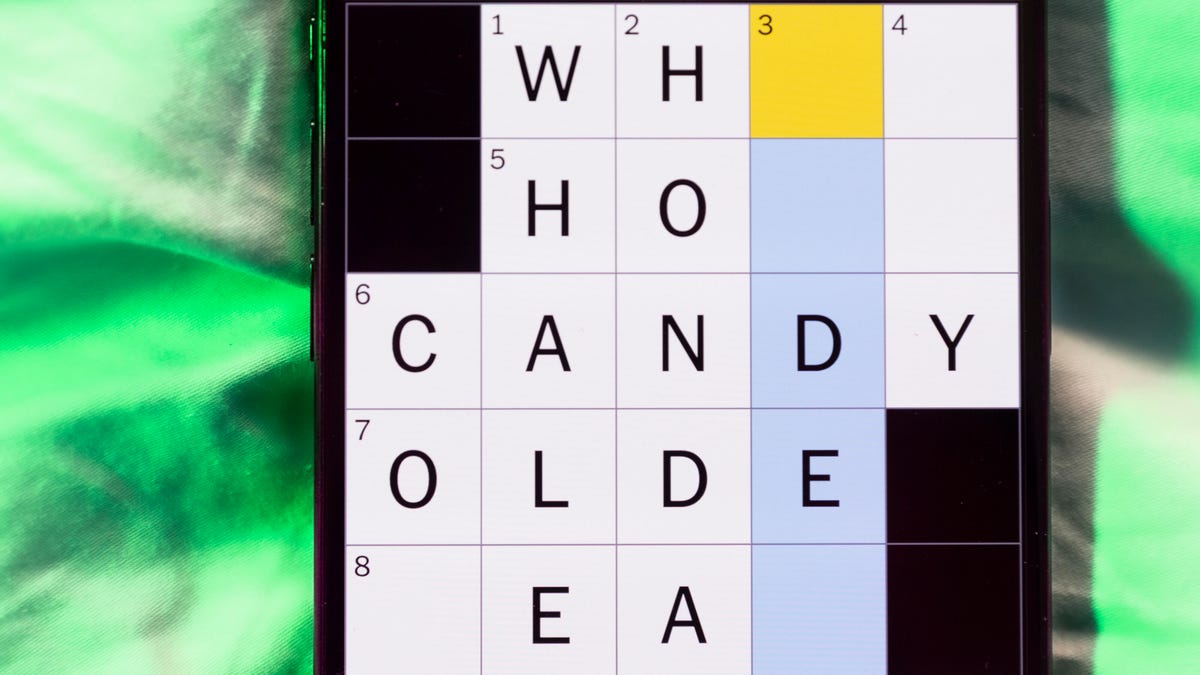
Looking for the most recent Mini Crossword answer? Click here for today’s Mini Crossword hints, as well as our daily answers and hints for The New York Times Wordle, Strands, Connections and Connections: Sports Edition puzzles.
Need some help with today’s Mini Crossword? It includes both the first and last name of one of my favorite chefs of all time — maybe yours, too. Read on for the answers. And if you could use some hints and guidance for daily solving, check out our Mini Crossword tips.
If you’re looking for today’s Wordle, Connections, Connections: Sports Edition and Strands answers, you can visit CNET’s NYT puzzle hints page.
Read more: Tips and Tricks for Solving The New York Times Mini Crossword
Let’s get to those Mini Crossword clues and answers.
Mini across clues and answers
1A clue: Chromebooks, but not MacBooks
Answer: PCS
4A clue: «Yippee!»
Answer: WAHOO
6A clue: Reveal, as juicy gossip
Answer: SPILL
7A clue: With 2-Down, chef who helped popularize chicken cordon bleu in the U.S.
Answer: JULIA
8A clue: Toss in
Answer: ADD
Mini down clues and answers
1D clue: Toss in
Answer: PAPUA
2D clue: See 7-Across
Answer: CHILD
3D clue: State of matter for most elements at room temperature
Answer: SOLID
4D clue: Business-focused newspaper, for short
Answer: WSJ
5D clue: Hello, in Portuguese
Answer: OLA
Technologies
Want to Watch a Podcast? Netflix and Spotify Partner to Bring Video Podcasts to Streaming
Starting in early 2026, Netflix subscribers in the US will be able to watch select Spotify Studios and Ringer podcasts directly on the streaming platform.
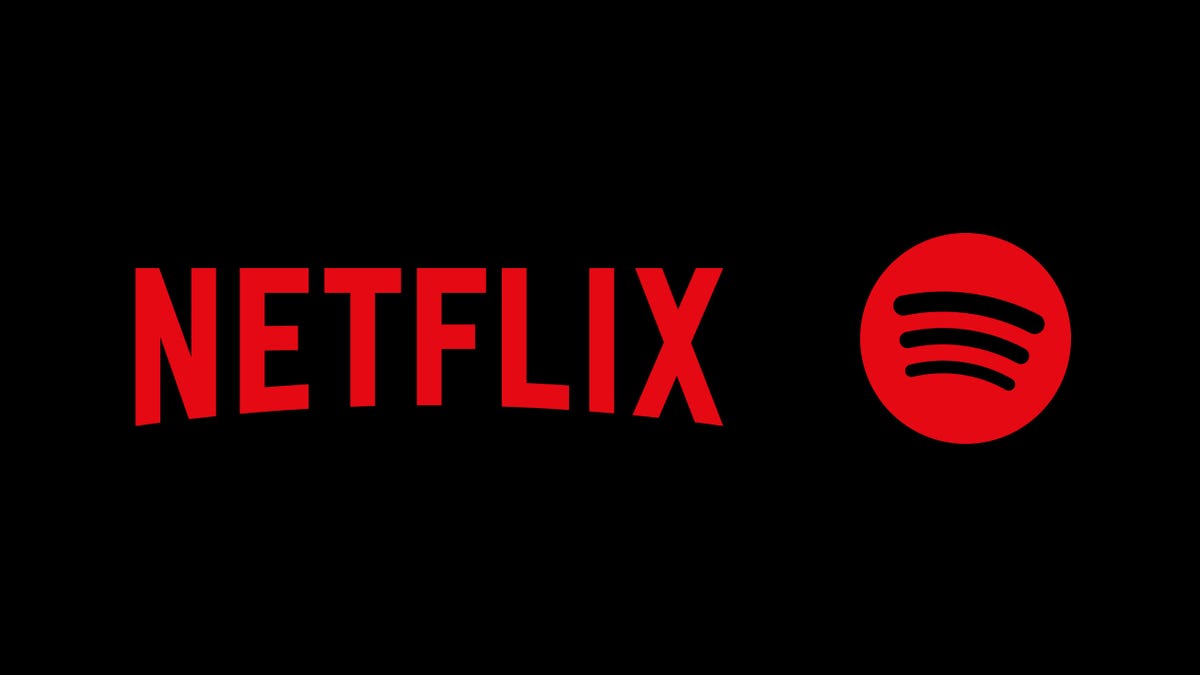
Netflix and Spotify are teaming up to blur the line between streaming and podcasting. The two companies announced a new partnership that will bring a curated slate of Spotify’s top video podcasts, including shows from Spotify Studios and The Ringer, to Netflix starting in early 2026. The goal is to make popular podcasts as watchable as TV, expanding both services’ reach into sports, culture, lifestyle and true crime.
Don’t miss any of our unbiased tech content and lab-based reviews. Add CNET as a preferred Google source.
The deal marks Spotify’s most significant distribution push beyond its own platform, and for Netflix, it’s a new way to keep audiences engaged with talk-driven, low-cost programming. Early titles include The Bill Simmons Podcast, The Rewatchables, Dissect, Conspiracy Theories and Serial Killers, among others. You can find the complete list here.
More shows and genres are expected to be added over time.
Netflix says the partnership complements its library of documentaries and talk shows, offering «fresh voices and new perspectives.» Spotify, meanwhile, described it as «a new chapter for podcasting,» giving creators access to Netflix’s global audience while expanding discovery for listeners who prefer watching podcasts.
The rollout will begin in the US early next year, with additional markets to follow in 2026.
-

 Technologies3 года ago
Technologies3 года agoTech Companies Need to Be Held Accountable for Security, Experts Say
-

 Technologies3 года ago
Technologies3 года agoBest Handheld Game Console in 2023
-

 Technologies3 года ago
Technologies3 года agoTighten Up Your VR Game With the Best Head Straps for Quest 2
-

 Technologies4 года ago
Technologies4 года agoVerum, Wickr and Threema: next generation secured messengers
-

 Technologies4 года ago
Technologies4 года agoBlack Friday 2021: The best deals on TVs, headphones, kitchenware, and more
-

 Technologies4 года ago
Technologies4 года agoGoogle to require vaccinations as Silicon Valley rethinks return-to-office policies
-

 Technologies4 года ago
Technologies4 года agoOlivia Harlan Dekker for Verum Messenger
-

 Technologies4 года ago
Technologies4 года agoiPhone 13 event: How to watch Apple’s big announcement tomorrow
